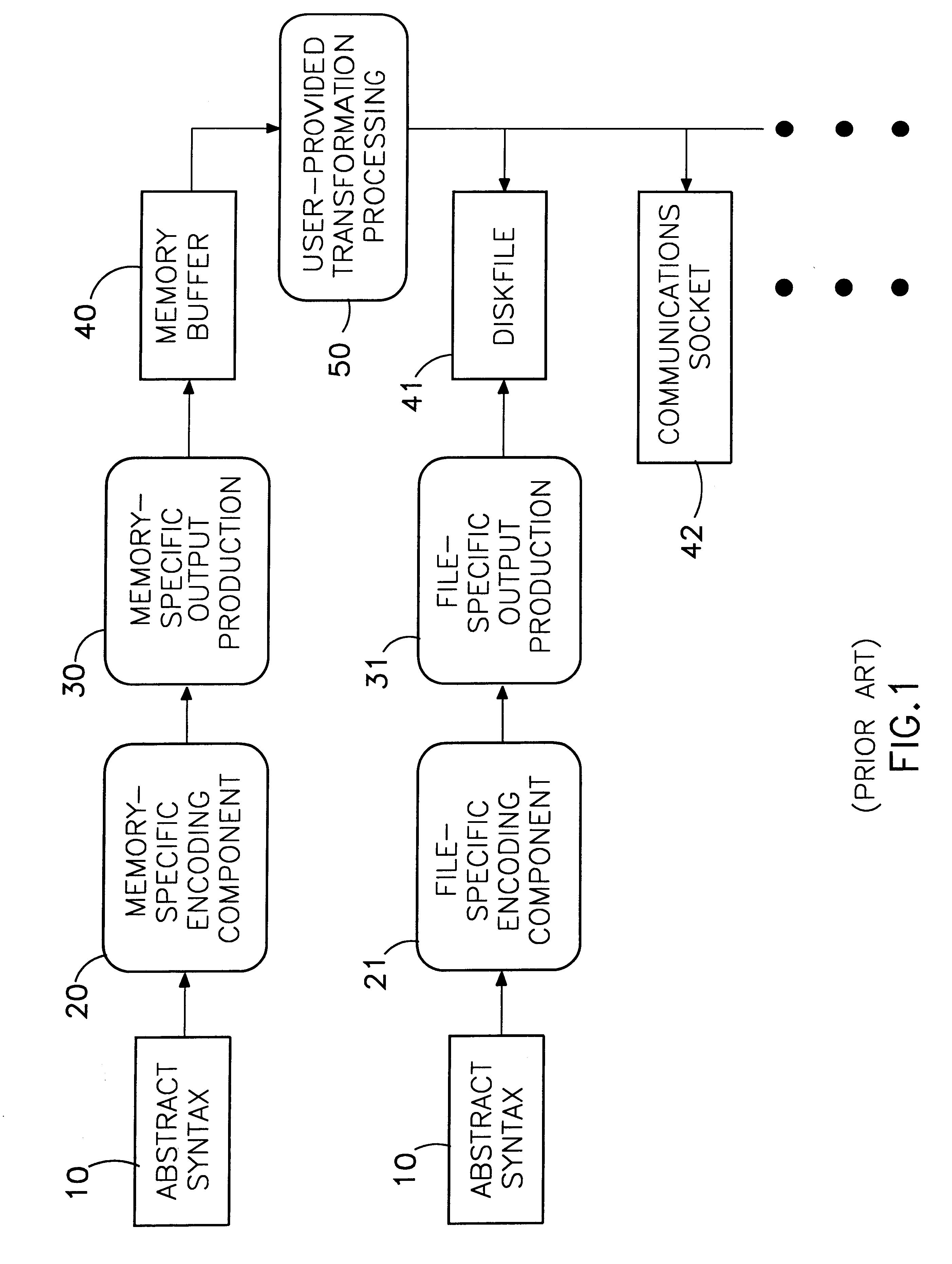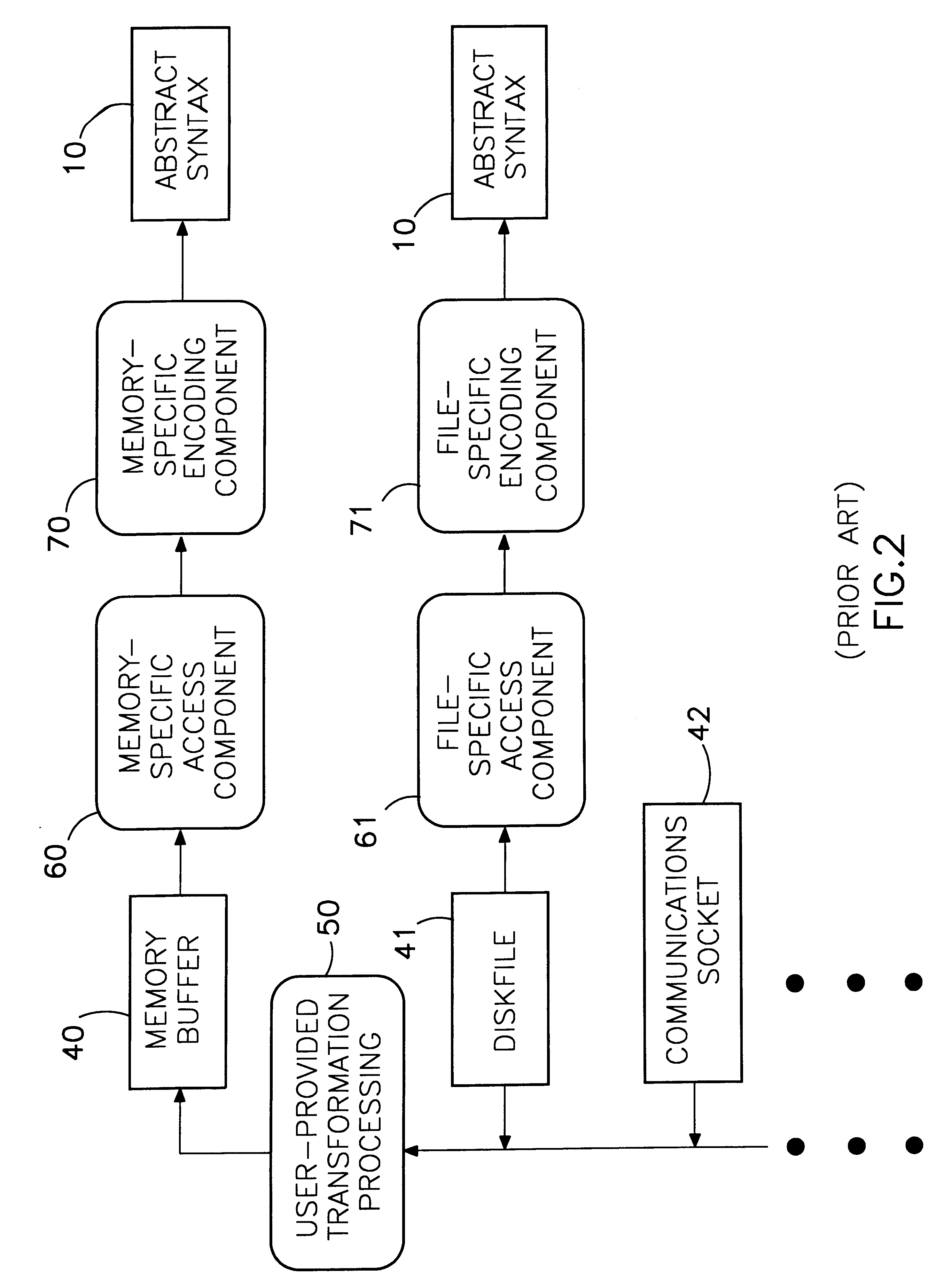Octet iterator template interface for protocol transfer syntax coding services
a protocol transfer and syntax coding technology, applied in the field of octet iterator template interface for protocol transfer syntax coding services, can solve the problems of closed-ended and inefficient process, limited options available in the prior art, and limited user access to transfer media
- Summary
- Abstract
- Description
- Claims
- Application Information
AI Technical Summary
Benefits of technology
Problems solved by technology
Method used
Image
Examples
Embodiment Construction
The present invention overcomes the limitations and inefficiencies inherent in the prior art by implementing the encoding / decoding engine in a manner such that a single implementation of the engine addresses an open-ended variety of transfer media. Thus, the engine implementor avoids providing several different engines for each different medium to be supported, and the engine user is not limited to a closed set of media, or reaching other media through inefficient transformations. This also eliminates the necessity of pre-allocating memory buffers by making self-extending memory buffers easily supportable. This is achieved in the preferred embodiment by employing a metadata-driven encoding / decoding engine having two templates, one for encoding and one for decoding, and a forward octet iterator for producing or accessing the transfer syntax in its appropriate medium.
FIG. 3 shows the encoding engine. The abstract syntax 10 is encoded using the template function encoding component 120 ...
PUM
 Login to View More
Login to View More Abstract
Description
Claims
Application Information
 Login to View More
Login to View More - R&D
- Intellectual Property
- Life Sciences
- Materials
- Tech Scout
- Unparalleled Data Quality
- Higher Quality Content
- 60% Fewer Hallucinations
Browse by: Latest US Patents, China's latest patents, Technical Efficacy Thesaurus, Application Domain, Technology Topic, Popular Technical Reports.
© 2025 PatSnap. All rights reserved.Legal|Privacy policy|Modern Slavery Act Transparency Statement|Sitemap|About US| Contact US: help@patsnap.com



